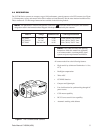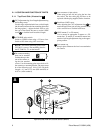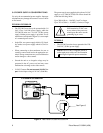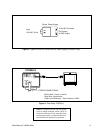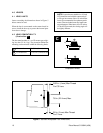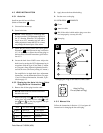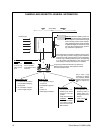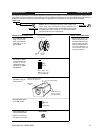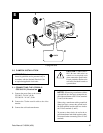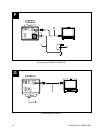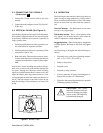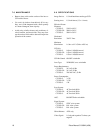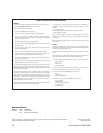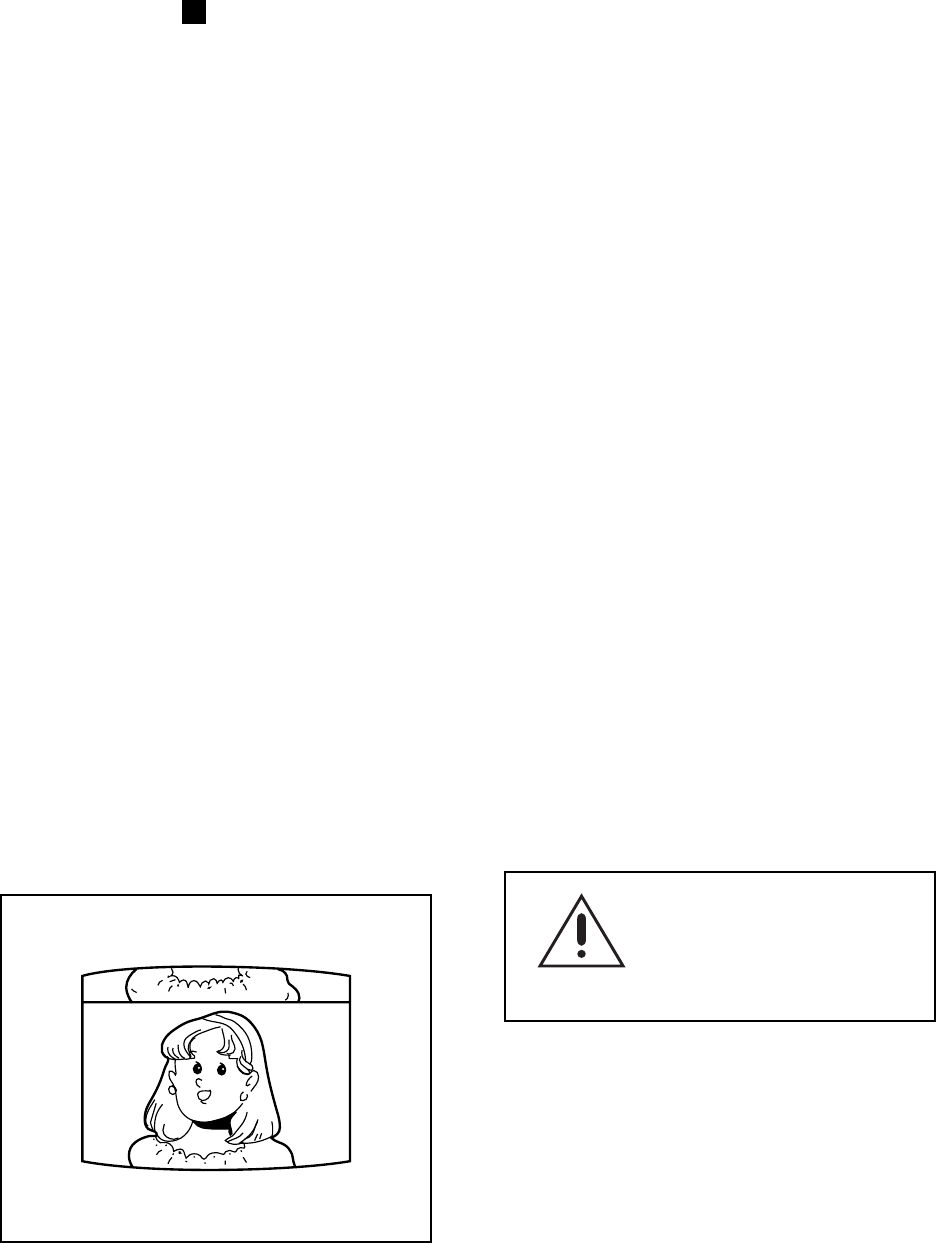
Pelco Manual C1900M (4/99) 17
Figure 6. Vertical Phase
5.2 CONNECTING THE CC3300-3
(Illustration G )
1. Connect the 75-ohm coaxial cable to the video
monitor.
2. Connect the main leads/power cord (220-240 VAC,
50 Hz only).
5.3 VERTICAL PHASE (See Figure 6)
Vertical phase adjustment is not vertical roll adjustment.
Each camera is adjusted to the AC zero crossover point
at the factory. Problems arise, however, (especially in
larger systems) when:
1. Switching rapidly between widely separated cam-
eras with manual or sequential switchers.
2. Switching between cameras not operating off the
same phase of the AC line.
3. Both of the above. There are other causes too (trans-
formers wired backward, for instance) but the basic
symptoms described below require V-phase adjust-
ment.
In such cases, camera switching may produce what ap-
pears to be a vertical roll on the monitor between the
two views. Turning the V Phase pot (while switching
rapidly as possible between the two camera views) will
adjust the relative phase angle between the two cam-
eras and the point at which one camera synchronizes to
the AC line with respect to the other. Adjust the pot
until the switching is clean and there is no vertical roll
or flip.
6.0 OPERATION
The following are characteristics that may be observed
when viewing an image produced by a CCD camera.
These are inherent characteristics of the CCD camera
and do not stem from any fault within the camera it-
self.
Vertical smear - This phenomenon occurs when
viewing a very bright object.
Patterned noise - This is a fixed pattern which
may appear over the entire monitor screen when the
camera is operated at a high temperature.
Jagged picture - When viewing stripes, straight lines
or similar patterns, the image on the screen may appear
jagged.
Avoid operating or storing the unit in the following lo-
cations:
• Extremely hot or cold places (operating tempera-
ture – 14° to 122°F [-10° to 50°C])
• Damp or dusty places
• Exposed to rain
• Exposed to strong vibration
• Close to generators of strong electromagnetic ra-
diation such as radio or TV transmitters
• Exposed to fluorescent light reflections or unstable
(flickering) lighting conditions
CAUTION: The camera
should not be pointed at the sun,
or used for shooting very bright
objects, as the CCD imager may
be permanently damaged.



